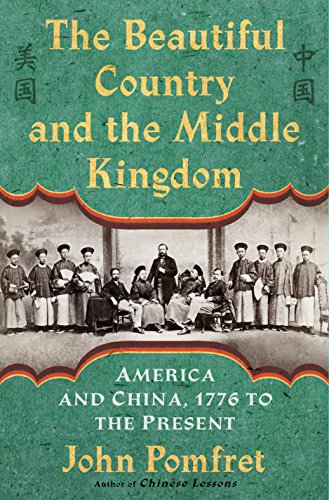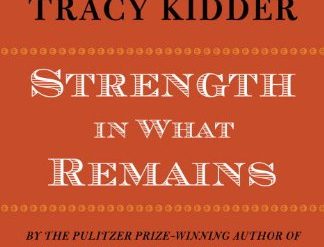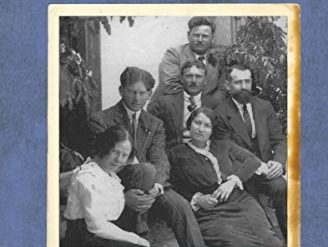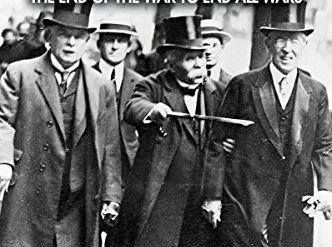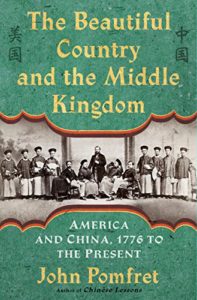
Some Americans seem to have the impression that the U.S. relationship with China began in 1972 when Richard Nixon flew to Beijing. In The Beautiful Country and the Middle Kingdom, journalist and long-time Beijing resident John Pomfret puts this mistaken impression decisively to rest. In truth, the destinies of the two countries have been closely linked for more than a century—and began when the U.S. shed its identity as a British colony in 1776. As Pomfret writes, “America’s first fortunes were made in the China trade from 1783 until the early 1800s.” And American missionaries began arriving in the 1830s.
Estimated reading time: 7 minutes
The world’s wealthiest nation
Few Americans are aware that in 1800 China was the world’s wealthiest nation. Its factories produced one-third of all the world’s goods. The world’s wealthiest businessman was a Chinese trader. And a single Chinese city—Guangzhou (formerly Canton)—harbored a population of one million people. That was the equivalent of one-fourth of the U.S. population. Though China’s relative position in the world economy declined rapidly in the course of the 19th century, the country still loomed large in the eyes of American business and represented the number one target of the fast-growing evangelistic faiths that dominated religion in the U.S.
The Beautiful Country and the Middle Kingdom: America and China, 1776 to the Present by John Pomfret (2016) 705 pages ★★★★★
The central importance of bilateral trade
Pomfret surveys the two-and-a-half centuries that have elapsed since English-turned-American traders first visited China. In fact, trade between the U.S. and China is one of the dominant themes of that history. Many great American fortunes were built on the opium trade, which dominated bilateral commerce throughout the 19th century. In more recent years, beginning in earnest in the 1980s in the wake of Deng Xiao-Peng’s economic reforms, trade has loomed large in the economies of both countries. Today, of course, the U.S. exports more than $100 billion annually to China—and imports $400 billion. “America has been China’s top trading partner since the 1990s,” Pomfret writes. “China surpassed Canada to become America’s top partner in 2015.”
Missionaries and education in U.S.-China relations
Two other themes emerge clearly in The Beautiful Country and the Middle Kingdom: the disproportionately large role played by American Protestant missionaries, and the importance of U.S. influence both in building China’s educational system and in educating millions of Chinese in American universities. As Pomfret writes, “During the heyday of American missionary activity from the late nineteenth through the early twentieth century, Americans funded a majority of China’s colleges and high schools and scores of . . . YMCA and YWCA centers as well as agricultural extensions, charities, and research institutes.” Even today, privileged young Chinese commonly seek out higher education in the U.S. Pomfret: “From Deng Xiaoping on, every Communist leader has sent at least one of his children to the US to study, including the Harvard-educated daughter of the current president, Xi Jinping.”
Throughout most of the 20th century, American-educated Chinese played outsized roles in their country’s history. In the closing years of the 19th century and the first several decades of the 20th, most of those who attended American colleges and universities were Protestants. The range of their studies was as broad as that of American students. In more recent decades, a large proportion of Chinese students in the United States have obtained degrees in science and engineering. As a result, they have helped China attain ever-growing prominence in the sciences. And those who have chosen to remain in the U.S. have played a role in building the American high-tech sector far out of proportion to their share of the population.
An intimate relationship despite outward hostility
Pomfret emphasizes that the current hostility between the U.S. and China is largely a recent phenomenon. Until the People’s Republic of China was founded in 1949, the U.S. was generally held in high regard in China despite episodes such as the Boxer Rebellion of 1899-1901 when American troops invaded China. While Britain, Germany, France, Russia, and Japan repeatedly carved out portions of Chinese cities where their own laws applied, the anti-colonial U.S. rarely collaborated. This helped Americans gain a reputation as friendy and respectful by comparison.
American support for Chiang Kai-Shek’s Nationalist government, the U.S. role in the Korean War, and the Communist Chinese government’s need to elevate a single foreign enemy as a scapegoat were principally responsible for souring the relationship. Outwardly, the two countries have been hostile in recent decades. However, in reality, the relationship in recent years has been more intimate than ever.
The high regard in which most Chinese held Americans was not reciprocated. America’s attitude toward China and the Chinese was dominated by racism throughout much of the last two-and-a-half centuries. It’s well known that immigrant Chinese laborers played a major role in building the transcontinental railroad, less widely recognized that the same was true of the Western mining industry.
Yet, as Pomfret notes, the passage of the Chinese Exclusion Act in 1882 to combat the so-called Yellow Peril “resulted in an epidemic of mass roundups, expulsions, arson, and murder that spread from California to Colorado, from Washington state to the South. The scattered violence of the 1870s turned into a systematic purge.” The law was not repealed until 1943. “The vast federal bureaucracy designed to limit immigration to America,” Pomfret explains, “was originally created not in response to Mexicans [and now Muslims], but to the Chinese.”
A lively account of U.S.-China relations
Pomfret’s account of U.S.-China relations is lively. Working chronologically, he paints sketchy portraits of many of the fascinating characters who have dominated this still unfolding drama. All the familiar names are there, of course—from the Dowager Empress Cixi, Sun Yat-Sen, and Mao Tse-Tung to Pearl Buck, John Dewey, and Richard Nixon—but most of the people who played major roles are unfamiliar to American readers. There are a lot of them: The Beautiful Country and the Middle Kingdom consists of 700 pages of densely written text.
There are many surprises in the book. For me, the biggest of these was the revelation that, contrary to generally accepted scholarly opinion, the Chinese resistance to the Japanese was not led by Mao’s Communists but by the Nationalist forces of Chiang Kai-Shek. The Red Army rarely engaged the Japanese, while the Nationalists lost hundreds of thousands of troops doing so. Another surprise was to learn that Barbara Tuchman’s laudatory biography of U.S. General Joseph (“Vinegar Joe”) Stillwell was based in large part on misinformation. Pomfret documents the general’s repeated strategic and tactical errors in “advising” Chiang Kai-Shek. Pomfret concludes that “Tuchman’s Pulitzer Prize–winning work on Joseph Stilwell was magisterial but deeply unfair.”
The title of The Beautiful Country and the Middle Kingdom reflects the English translation of the names by which the two countries are sometimes rendered in Mandarin. “The Beautiful Country,” of course, refers to the United States, as it was regarded by many Chinese visitors beginning in the 19th century.
About the author
John Pomfret speaks, reads, and writes Mandarin as well as several European languages. In an Afterword, he writes “As a reporter for the Associated Press, I was tossed out of China in 1989 following the June Fourth massacre. The government accused me of being one of the ‘black hands’ behind the protests. Later, as the China bureau chief for the Washington Post, I had my share of run-ins with China’s security services . . .” He researched The Beautiful Country and the Middle Kingdom as a Fulbright senior scholar in China.
For related reading
For a later book that examines Chinese policy in the 21st century, see Overreach: How China Derailed its Peaceful Riseby Susan L. Shirk (Why the US and China are at odds).
I’ve also reviewed the author’s From Warsaw With Love: Polish Spies, the CIA, and the Forging of an Unlikely Alliance (The long-lasting alliance between Polish spies and the CIA).
This is one of the books I’ve included in my post, Gaining a global perspective on the world around us.
It’s also one of 13 good recent books about American foreign policy and of 30 insightful books about China.
Also, check out Top 10 nonfiction books about politics for more good reading.
You may enjoy browsing through 20 top nonfiction books about history.
For more good books on the history of the US, see Top 20 popular books for understanding American history.
And you can always find my most popular reviews, and the most recent ones, on the Home Page.

